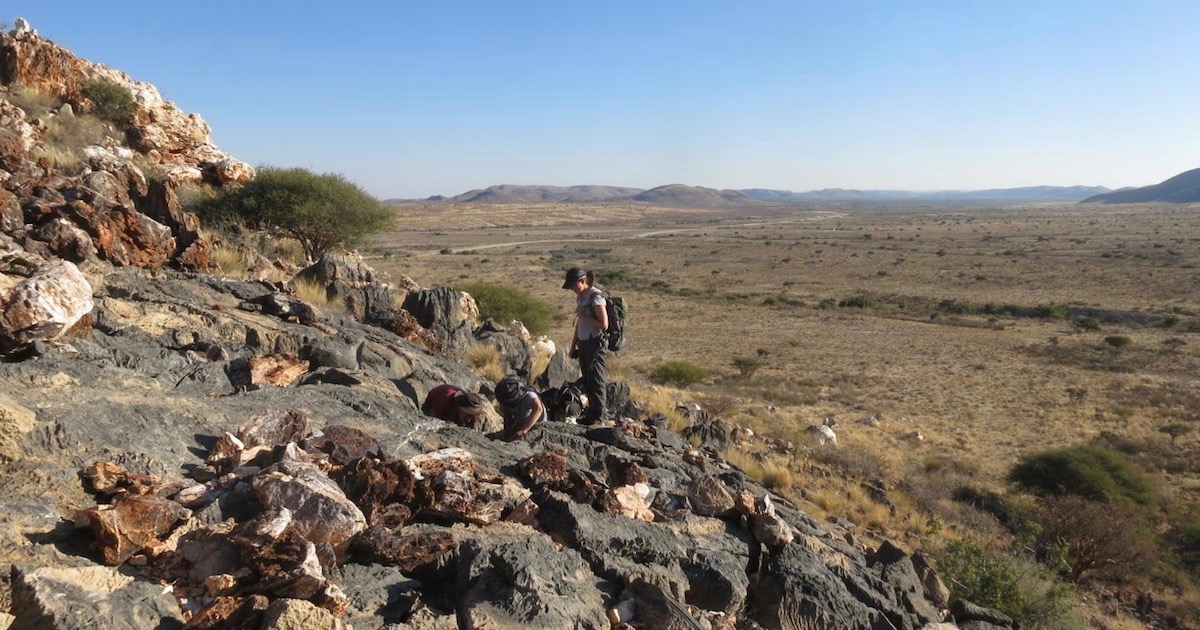 Intelligent Design
Intelligent Design
 Paleontology
Paleontology
Resurrecting Namacalathus as an Ediacaran Animal

Sometimes there are strange coincidences. I had finished a podcast for ID the Future (IDtF 2021) discussing my two articles about the Ediacaran organism Namacalathus at Evolution News (Bechly 2020a, 2020b). Just then a new article came out that again claims to identify Namacalathus as an Ediacaran animal and thus to refute the abruptness of the Cambrian Explosion. I have already laid out in previous articles why such a discovery, even if the claimed results were sound and correct, would by no means solve the problem of the Cambrian Explosion. However, is the new study indeed sound and correct? Today and tomorrow, I will consider that question. I will append my References section tomorrow.
The new paper is “Ediacaran metazoan reveals lophotrochozoan affinity and deepens root of Cambrian Explosion,” just published in the open-access journal Science Advances. Shore et al. (2021) describe new better-preserved material of Namacalathus from the Ediacaran of Namibia. In this material the authors identify three-dimensional pyritized remains of the soft-tissue organism, while previously only the hard parts of the calcitic skeleton were known.
In their introduction the authors summarize the state of knowledge up till now:
Namacalathus has been proposed to be a cnidarian because of its hexaradial symmetry and a goblet-like morphology, as found in some hydrozoan polyps, scyphozoan scyphistomae, and stauromedusae (1). Others have suggested a protozoan affinity because of the absence of accretionary growth (6) or a total group lophophorate based on foliated skeletal microstructure and bilateral budding (3). Recently, a stem group ctenophore affinity has been proposed on the basis of phylogenetic analyses and a general morphological similarity to sessile, Cambrian skeletonized “dinomischids” and scleroctenophores (7).
Fair Enough
That’s exactly what I concluded in my article (Bechly 2020b). However, based on their study of the new material, the authors now claim that the new evidence actually confirms a lophotrochozoan affinity of Namacalathus. That is not very surprising considering the fact that the two lead authors of the paper Zhuravlev et al. 2015, who first proposed a lophophorate relationship of Namacalathus, are also co-authors of the new study. They triumphantly proclaim:
[W]e can extend the origin of these modern lophotrochozoan phyla further back still into the terminal Ediacaran. In so doing, we establish a phylogenetic connection between Ediacaran and early Cambrian taxa, faunas that were previously thought distinct. We hence extend the roots of the Cambrian Explosion itself into the Ediacaran, where total group lophotrochozoans such as Namacalathus show a combination of features that became typical of both later lophophorates and representatives of the entoproctan-molluscan-annelidan branch.
The popular media of course go further, with sensational headlines like “Paleontologists find evolutionary link between Ediacaran and Early Cambrian multicellular animals” (News Staff, Sci-News 2021). In the official press release it is even maintained that “Fossils’ soft tissues [are] helping to solve puzzle that vexed Darwin” (University of Edinburgh 2021). With the latter puzzle they of course refer to the conundrum of the Cambrian Explosion with its sudden appearance of animal body plans, elaborated in Stephen Meyer’s book Darwin’s Doubt (Meyer 2013) as a major problem for Darwin’s theory. Eureka, now the problem has been solved at last!
Or Has It?
The new fossils stem from a layer in the Nama Group of Namibia, which lies just below an ash bed that could be radiometrically dated to 547.32 ± 0.65 million years. That is right within the Ediacaran period. Supposed soft tissues as well as coiled bacteria are unusually preserved as iron oxide and pyrite, which is a sulfide iron mineral (FeS2) also known as “fool’s gold.” The fossils were studied with micro-CT scanning and thin sections, which allowed the computer aided reconstruction of 3D models.
If a layman were to look at the figures of the fossil remains and even the 3D-reconstructiuons, he would be quite unimpressed and conclude that you can’t see much and surely nothing definitive. If I as a professional paleontologist look at the published images, I can only come to the same conclusion. Even the authors themselves seem to be aware that the evidence is far from compelling. The article is full of language expressive of doubt: “may be homologous,” “possible,” “putative,” “can be interpreted,” “can be inferred,” “might correspond,” “may/could represent,” “suggesting that this may have been,” etc. Only in their abstract and the two final paragraphs of the discussion section, which is the only thing that most readers will remember or even read, the authors suddenly become more confident. They boldly proclaim that they are
now able to reconstruct Namacalathus as a total group lophotrochozoan, capable of asexual budding with an organic-rich, foliated calcareous skeleton and an open, apical J- or U-shaped gastric cavity within the apical opening potentially accommodating a retractable collar of tentacles and with brood chambers around the lumens.
You might assume that these structures and similarities with lophophorates are unambiguous. Are they? Nope! Tomorrow, let’s look at the evidence.
